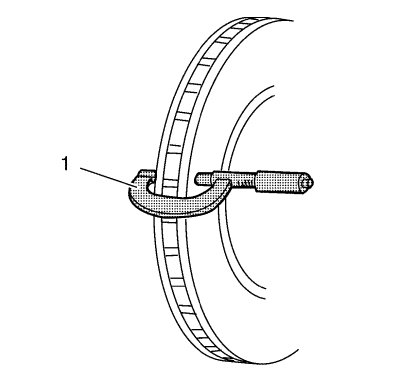Orlando |
||||||||
|
|
|
|||||||
Warning: Refer to Brake Dust Warning in the Preface section.
| • | Heavy rust and/or pitting. |
| • | Light surface rust can be removed with an abrasive disc. Heavy surface rust and/or pitting must be removed by refinishing the rotor. Refer to Brake Disc Refinishing . |
| • | Cracks and/or heat spots. |
| • | Excessive blueing discolouration. |

| © Copyright Chevrolet. All rights reserved |
| © Copyright Chevrolet. All rights reserved |